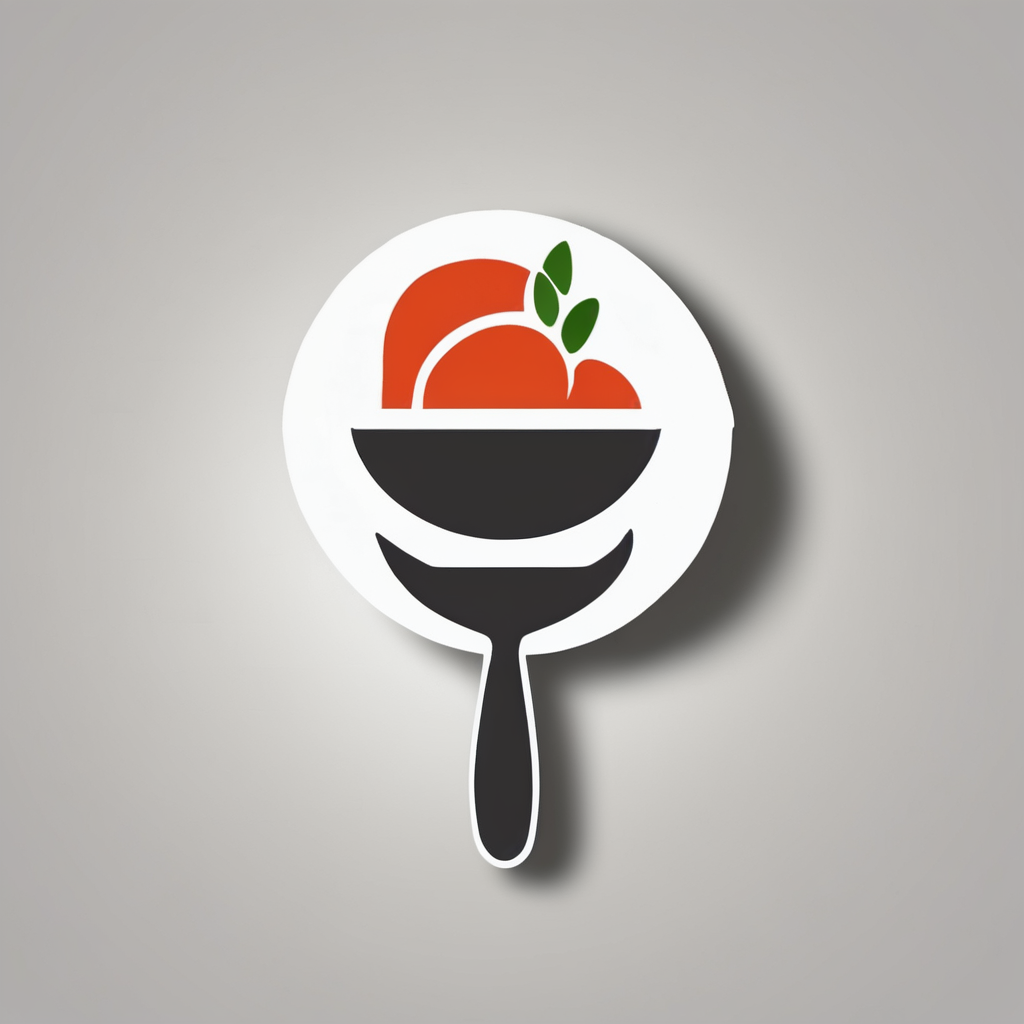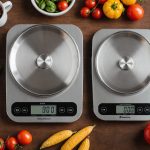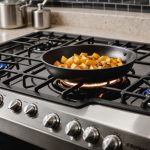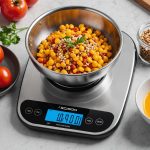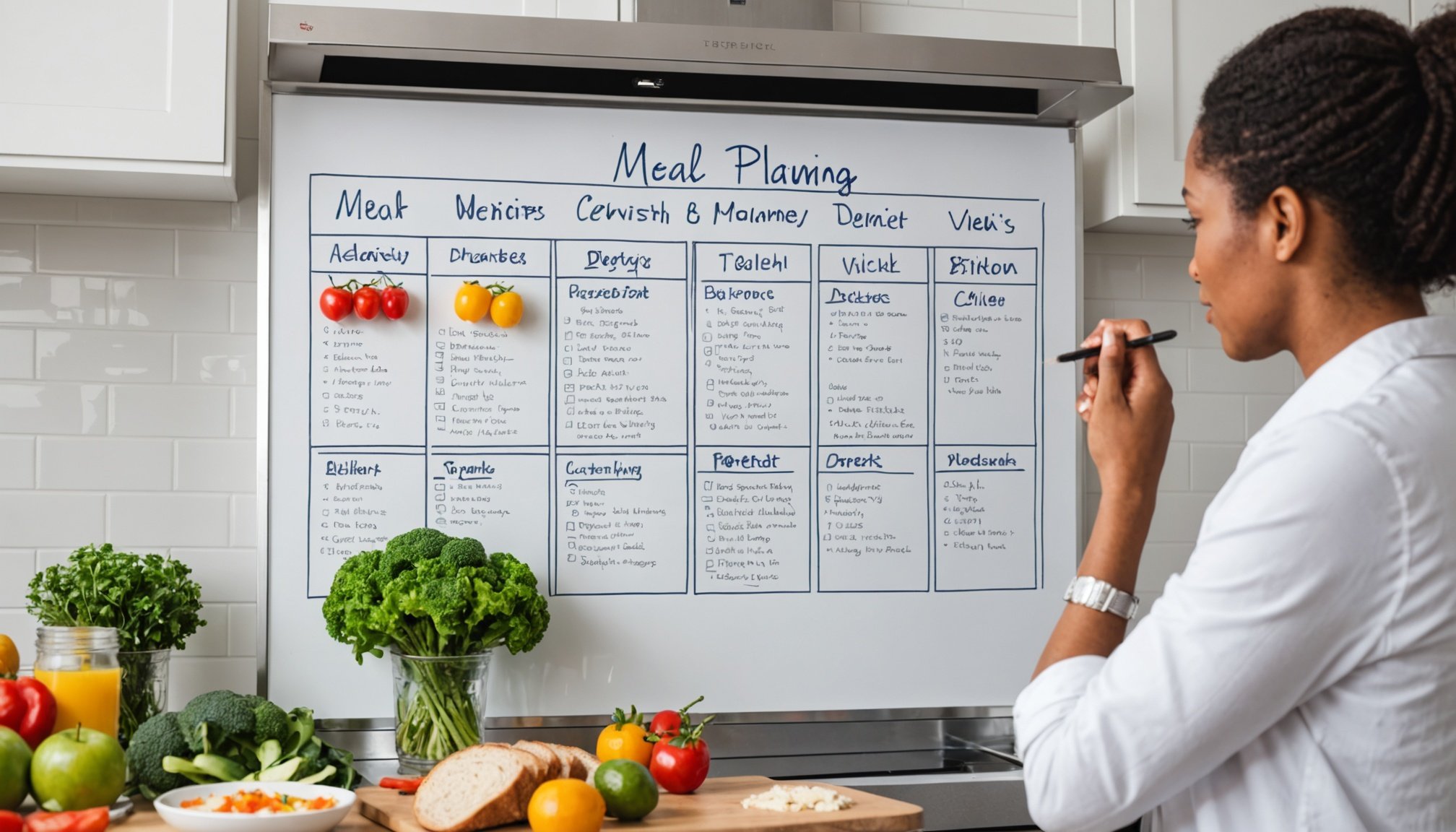Understanding the Meal Planning Whiteboard
Meal planning whiteboards are powerful meal planning tools that serve as visual aids for users aiming to streamline kitchen organization and implement effective weight loss strategies. They are not just simple boards; they are a means of displaying your dietary goals clearly and succinctly. By regularly updating and maintaining this visual aid, you keep your weight loss strategies front and centre, which can significantly enhance your commitment to achieving your goals.
Visualizing your goals on a meal planning whiteboard plays a crucial role in kitchen organization. It allows you to plan meals in advance, ensuring that your dietary needs are met while potentially reducing food waste. This organizational structure not only aids in sustaining a balanced diet but also facilitates better meal planning tools adoption, promoting efficient use of kitchen resources.
Topic to read : Revitalize your kitchen: unlock the benefits of smart acoustic panel placement to reduce stress and control overeating
Moreover, organization is pivotal in supporting weight loss. A well-organized kitchen, propelled by the thoughtful use of a meal planning whiteboard, minimizes the temptation of impulsive choices and leads to more consistent dietary habits. Knowing exactly what meals are planned helps avoid last-minute, unhealthy decisions and fosters a structured routine conducive to achieving one’s weight loss and health aspirations.
Advantages of Using a Meal Planning Whiteboard
Meal planning whiteboards are invaluable when it comes to enhancing accountability and consistency in meal choices. They serve as a constant reminder of your nutritional goals, encouraging you to stick to them. For example, having your meal plan visible increases the likelihood that you’ll prepare the meals you intend to, rather than default to less healthy options.
Also read : Unlock mindful eating: how a portion control mat on your table can curb overeating
Moreover, these boards play a crucial role in promoting healthier eating habits through structured planning. By clearly laying out what you need for each meal, you reduce the temptation to purchase unhealthy, last-minute alternatives. The process of choosing ingredients in advance ensures you opt for more nutritious choices, aligning with long-term health data.
The use of a meal planning whiteboard effectively reduces stress and decision fatigue during meal preparation. Knowing what to cook and having the required ingredients at hand simplifies the process, making it less overwhelming. By eliminating guesswork, you can focus on cooking, which streamlines meal prep and increases enjoyment. This structure not only supports weight loss efforts but also frees up mental energy for other daily tasks. Thus, a meal planning whiteboard is an excellent tool for those seeking seamless integration between health goals and everyday life.
Effective Strategies for Using Your Meal Planning Whiteboard
Utilizing a meal planning whiteboard efficiently requires certain strategies to maximize its benefits for both meal planning tips and overall time management. Begin by choosing a prime location for your whiteboard that ensures visibility. Placing it in a central spot like the kitchen can easily remind you of your planned meals. This enhances commitment and makes meal preparation seamless.
Setting Up Your Meal Planning Whiteboard
Set up your whiteboard with sections for each day of the week, leaving space for breakfast, lunch, and dinner. A well-structured weekly layout supports your lifestyle and aids in time management by organizing meals ahead. This preparation helps avoid the frustration of last-minute decisions, contributing to your weight loss journey.
Creating a Weekly Layout for Success
Incorporate seasonal ingredients into your meal plans. Not only does this make meals fresher, but it can also be more cost-effective. This aspect of planning encourages dietary exploration, enabling healthier choices. Seasonal planning might include fresh spring greens or autumn root vegetables, keeping meals dynamic and interesting. Such strategies bridge practical meal planning with nutritional optimization, promoting effective weight management and healthy living overall.
Examples of Meal Planning Layouts
Meal planning visuals can vary widely, offering numerous customization options to suit different needs and preferences. An array of templates for meal planners are available, catering to various schedules and styles.
- Weekly Layouts: Ideal for those seeking structure, a weekly format allows for detailed planning of daily meals, leaving room for flexibility and quick adjustments.
- Bi-Weekly Formats: These are perfect for those who prefer a more extended view, providing a broader scope that helps in bulk shopping and minimizes frequent grocery trips.
- Monthly Designs: Suitable for ambitious planners who enjoy mapping out comprehensive meal plans ahead of time. These require a deeper insight into potential shifts in dietary needs and plans.
When considering effective layout design, personalise it to fit individual preferences. Customisation could include adding sections for snacks, highlighting main ingredients, or incorporating motivational quotes to keep you on track. Let your creativity drive how these layouts empower your meal planning process. These strategies help make meal planning not only effective but also inspiring and sustainable, fitting seamlessly into diverse lifestyles and supporting long-term healthy eating habits.
Motivational Insights for Your Weight Loss Journey
Embarking on a weight loss journey can be challenging, and maintaining motivation throughout is critical. Setting realistic and achievable goals plays a significant role in sustaining enthusiasm. Identifying specific targets, such as losing a certain amount of weight over a period, provides clear direction. These tangible goals should be feasible yet aspirational, inspiring progress without overwhelming you.
A meal planning whiteboard can serve as a daily source of motivation. By consistently displaying your dietary plans and milestones, it acts as a visual prompt to stay focused on your aspirations. This constant reminder can foster positive behaviours and reinforce commitment to your weight loss efforts.
Tracking your progress helps you celebrate small victories, crucial for maintaining momentum. Charting weight loss or improved dietary choices directly on your whiteboard offers a tangible indication of how far you’ve come. Such recognition not only boosts morale but also encourages perseverance.
Understanding the psychological benefits of meal planning further amplifies its effectiveness. Planning provides a sense of control and reduced anxiety, directly impacting your weight after a good time. This structure supports not only physical health but also mental well-being, promoting an overall healthier lifestyle.
